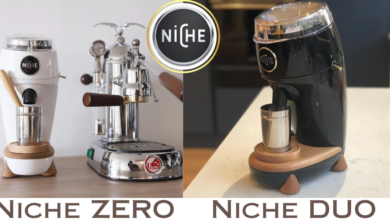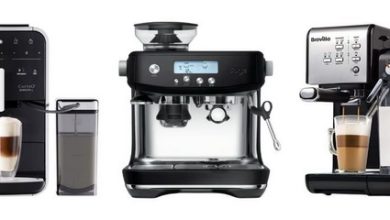Are Coffee Beans and Espresso Beans the Same? Exploring the Key Differences
Are Coffee Beans and Espresso Beans the Same
Are Coffee Beans and Espresso Beans the Same
A. Hook:
Coffee enthusiasts often engage in lively debates regarding the fundamental dissimilarities between coffee beans and espresso beans. This ongoing discourse stems from the intriguing question: “Are coffee beans and espresso beans the same?”
B. Brief overview of coffee
culture and the widespread popularity of both coffee and espresso sets the stage for understanding the significance of this debate. Coffee has entrenched itself as a beloved beverage worldwide, with a rich cultural heritage spanning centuries. Similarly, espresso holds a special place in the hearts of caffeine aficionados, revered for its bold flavor and concentrated form.
C. Thesis statement:
Despite their shared origins in the humble coffee bean, a closer examination reveals that coffee beans and espresso beans are distinct entities with unique characteristics. This exploration will uncover the nuances that differentiate them and underscore how these disparities significantly impact taste, preparation methods, and overall consumption experiences. Thus, the question remains: “Are coffee beans and espresso beans the same?” Let’s delve deeper to find out.
Understanding Coffee Beans
A. Definition of Coffee Beans and Their Origins (Arabica vs. Robusta) Coffee beans are the seeds of the Coffea plant, which belong to the Rubiaceae family. These beans are harvested, processed, and roasted to create the beloved beverage enjoyed by millions worldwide. When exploring the question, “Are coffee beans and espresso beans the same?” it’s crucial to understand the origins of coffee beans. The two primary species of coffee beans are Arabica and Robusta.
Arabica beans, originating from the Coffea Arabica plant, are known for their nuanced flavors, often featuring floral, fruity, or acidic notes. Robusta beans, derived from the Coffea Canephora plant, have a stronger, more bitter taste with higher caffeine content. Recognizing these distinctions is essential in discerning the differences between coffee beans and espresso beans.
B. Varieties of Coffee Beans and Their Flavor Profiles Diverse varieties of coffee beans exist, each offering unique flavor profiles shaped by factors such as soil, climate, altitude, and processing methods. Varieties like Ethiopian Yirgacheffe boast floral and citrus notes, while Colombian beans often feature a balanced profile with caramel and nutty undertones.
This diversity in flavor highlights the complexity of coffee beans, further emphasizing how coffee beans and espresso beans differ in taste and aroma. Understanding these flavor profiles aids in selecting the appropriate beans for brewing coffee or making espresso, based on personal preferences and desired sensory experience.
C. Cultivation and Harvesting Processes The cultivation and harvesting processes play a crucial role in shaping the characteristics of coffee beans. Coffee plants thrive in specific climates, typically found in regions near the equator, known as the “coffee belt.” Cultivation involves meticulous care, including soil management, irrigation, and pest control, to ensure optimal bean development.
Harvesting methods vary but often involve either selective picking or strip picking, depending on the desired quality and efficiency. Selective picking, where only ripe cherries are harvested by hand, yields higher-quality beans prized for their complexity and flavor. Strip picking involves harvesting all cherries at once, which may include both ripe and unripe fruit, often resulting in lower-quality beans. Understanding these cultivation and harvesting practices provides insight into the differences between coffee beans and espresso beans, as each may undergo distinct processes tailored to their intended use.
Espresso Beans: What Sets Them Apart?

A. Explanation of Espresso Beans and How They Differ from Regular Coffee Beans Espresso beans are a specific type of coffee bean that is tailored for the unique brewing process of espresso. While they share the same botanical origins as regular coffee beans, espresso beans are typically roasted to a darker degree to enhance their flavor profile when brewed under pressure.
This distinction in roasting is crucial, as it impacts the beans’ density, oils, and solubility, all of which contribute to the characteristics of espresso. Thus, while both coffee beans and espresso beans originate from the same plant species, their treatment during roasting and preparation sets them apart in taste and brewing method, answering the question, “Are coffee beans and espresso beans the same?”
B. Roasting Techniques Specific to Espresso Beans and Their Impact on Flavor Roasting techniques play a pivotal role in shaping the flavor profile of espresso beans. Unlike regular coffee beans, which may undergo various roast levels depending on preference, espresso beans are commonly roasted to a dark or even “espresso” roast. This intense roasting process leads to the development of rich, caramelized sugars and oils within the beans, resulting in a bolder and more robust flavor profile.
The deep roasting also contributes to the characteristic bitterness often associated with espresso, balancing out its acidity and enhancing its body. Thus, the specific roasting techniques employed for espresso beans differentiate them from their regular coffee counterparts, reinforcing the notion that coffee beans and espresso beans are not the same.
C. The Role of Bean Size and Grind in Espresso Preparation In addition to roasting, bean size and grind are crucial factors in espresso preparation. Espresso beans are typically ground to a finer consistency than coffee beans, resembling a fine powder rather than the coarser grounds used for drip coffee. This finer grind allows for optimal extraction during the short brewing time characteristic of espresso, ensuring a concentrated and flavorful shot. Furthermore, the compact nature of espresso grind facilitates the formation of a thick, creamy crema—a hallmark of a well-prepared espresso shot.
The size and uniformity of espresso beans also contribute to consistent extraction and flavor profile. Thus, the distinct size and grind requirements for espresso beans underscore their unique role in espresso preparation, highlighting the differences between coffee beans and espresso beans.
Taste and Flavor Profile Comparison
A. Examination of the taste differences between coffee brewed from regular beans and espresso beans.
When comparing the taste of coffee brewed from regular beans versus espresso beans, discernible differences emerge, underscoring the question, “Are coffee beans and espresso beans the same?” Regular coffee tends to offer a broader flavor spectrum, often characterized by nuanced acidity, varied aroma, and a balanced profile.
On the other hand, espresso presents a more concentrated and intense flavor profile, with heightened richness and depth. The distinct tastes of each brew highlight the unique characteristics of their respective beans, contributing to the ongoing discussion surrounding their similarities or differences.
B. Factors influencing flavor, including roast level, acidity, and bitterness.
Several factors influence the flavor profiles of coffee and espresso beans, shedding light on whether they are indeed the same. Roast level plays a crucial role, with lighter roasts preserving the beans’ inherent flavors and highlighting their distinct characteristics, whereas darker roasts tend to impart smokier notes and a fuller body.
Acidity levels vary between coffee and espresso beans, with coffee often exhibiting brighter acidity, while espresso tends to have a more subdued acidity, contributing to its smoother taste. Additionally, bitterness, influenced by factors such as bean variety and roast level, differs between the two, with espresso typically carrying a more pronounced bitterness compared to coffee. These variations in flavor attributes further emphasize the unique qualities of coffee and espresso beans.
C. How the brewing method affects taste perception.
The brewing method employed significantly influences the taste perception of both coffee and espresso, adding depth to the exploration of whether coffee beans and espresso beans are the same. In traditional coffee brewing methods such as drip or pour-over,
water passes through the coffee grounds at a slower pace, allowing for optimal extraction of flavors and resulting in a lighter-bodied brew with pronounced acidity and nuanced flavors. Conversely, espresso brewing involves high-pressure extraction over a short duration, yielding a concentrated and robust shot characterized by its creamy texture and intensified flavors.
The distinct brewing techniques accentuate the inherent characteristics of the beans, amplifying their differences in taste and reinforcing the notion that coffee and espresso beans are not identical entities.
Preparation Methods: Coffee vs. Espresso

A. Overview of Traditional Brewing Methods for Coffee When preparing coffee using traditional methods, such as drip brewing or French press, the process typically involves coarse-ground coffee beans. The water is poured over the grounds and allowed to steep or drip through, extracting the flavors and oils from the beans.
This method emphasizes the nuanced flavors and aromas of the coffee beans, allowing for a more leisurely brewing experience. It’s important to note that these methods are optimized for brewing regular coffee beans, which are distinct from espresso beans.
B. Explanation of the Espresso-making Process, Including Equipment and Techniques Espresso, on the other hand, is brewed using a specialized method and equipment. Espresso machines force hot water through finely-ground espresso beans at high pressure, resulting in a concentrated shot of coffee known for its bold flavor and rich crema.
The equipment required for making espresso includes an espresso machine, a grinder capable of producing a fine espresso grind, and a tamper to evenly pack the grounds into the portafilter. The brewing process is quick, typically lasting around 25–30 seconds, and requires precise control over variables such as grind size, water temperature, and pressure. This method is specifically designed for extracting the intense flavors and aromas present in espresso beans, highlighting their unique characteristics.
C. Comparison of Brewing Times and Extraction Methods One of the key differences between brewing coffee and espresso lies in the brewing time and extraction methods. Traditional coffee brewing methods often involve longer brewing times, ranging from a few minutes to several hours, depending on the technique used. This slower extraction process allows for a more gradual release of flavors and oils from the coffee beans, resulting in a milder and more complex cup of coffee.
In contrast, espresso brewing is a much faster process, with extraction times typically around 25–30 seconds. The high pressure used in espresso extraction forces water through the tightly-packed grounds rapidly, extracting a concentrated shot of coffee with a bold and intense flavor profile. This fundamental difference in brewing times and extraction methods highlights the unique qualities of both regular coffee beans and espresso beans, showcasing that, indeed, they are not the same.
Misconceptions and Common Myths
A. Addressing common misconceptions about coffee and espresso beans being interchangeable.
- Many people mistakenly believe that coffee beans and espresso beans are the same, just used for different brewing methods. However, this is not accurate. The term “espresso beans” typically refers to coffee beans that are specifically roasted and blended for use in espresso machines. While both coffee and espresso come from coffee beans, they are roasted differently and have distinct flavor profiles suited to their respective brewing methods. Therefore, assuming they are interchangeable can lead to disappointing results in terms of taste and texture.
B. Debunking myths about caffeine content and health effects.
- There is a prevalent myth that espresso contains more caffeine than regular coffee due to its stronger flavor. In reality, the caffeine content of a cup of espresso is actually lower than that of a cup of brewed coffee. This misconception stems from the fact that espresso is served in smaller portions, so the concentration of caffeine per ounce appears higher. Additionally, both coffee and espresso can have various health effects, depending on factors such as consumption frequency and individual tolerance levels. However, there is no conclusive evidence to suggest that one is significantly healthier or more harmful than the other.
C. Exploring the cultural significance of espresso and its association with specific regions.
- Espresso holds a special place in the hearts of coffee enthusiasts worldwide, particularly in regions like Italy, where it originated. Its cultural significance goes beyond being a mere beverage; it represents a social ritual and a way of life for many. In countries like Italy and France, espresso is deeply ingrained in daily routines, from morning rituals to post-dinner conversations. The unique preparation method, serving style, and accompanying traditions contribute to espresso’s cultural allure. Understanding this cultural significance enhances appreciation for espresso as more than just a caffeinated drink, but as a symbol of hospitality, community, and tradition.
By addressing these misconceptions and myths surrounding coffee and espresso beans, we can better appreciate the nuances and differences between them. It’s essential to recognize that, while they share a common origin, they are distinct in flavor, preparation, and cultural significance. Understanding these distinctions enriches our coffee experience and deepens our appreciation for the diversity of the coffee world.
Practical Tips for Choosing the Right Beans

A. Factors to consider when selecting beans for brewing coffee or making espresso:
- Roast Level: Determine whether you prefer a light, medium, or dark roast. Coffee beans and espresso beans can vary in roast level, impacting their flavor profiles.
- Bean Origin: Pay attention to the origin of the beans, as different regions produce distinct flavor profiles. This consideration can help you decide whether coffee beans or espresso beans align better with your taste preferences.
- Grind Size: Understand the importance of grind size for brewing either coffee or espresso. Coffee beans are typically ground coarser for brewing methods like drip coffee, while espresso beans require a finer grind for espresso machines.
- Flavor Preferences: Consider your desired flavor profile. Coffee brewed from espresso beans tends to have a richer, more intense flavor compared to coffee brewed from regular beans. Understanding your flavor preferences can guide your bean selection process.
B. Advice on experimenting with different bean varieties and roasts:
- Start with Samples: Begin by trying small quantities of various bean varieties and roasts to discover your preferences. Experimenting with both coffee beans and espresso beans allows you to discern the subtle differences in flavor and aroma.
- Keep a Tasting Journal: Document your tasting experiences, noting the characteristics of each bean variety and roast. This journal can serve as a valuable reference as you explore different options and refine your preferences.
- Mix and Match: Don’t hesitate to mix different bean varieties or roasts to create unique flavor profiles. Blend coffee beans and espresso beans to tailor the taste to your liking, exploring whether coffee beans and espresso beans are the same or offer distinct experiences when combined.
C. Recommended resources for further exploration of coffee bean varieties:
- Local Roasters: Visit local coffee roasters or specialty coffee shops to explore a diverse selection of coffee and espresso beans. Engage with knowledgeable staff who can provide recommendations based on your preferences.
- Online Coffee Retailers: Explore online coffee retailers that offer a wide range of bean varieties and roasts. Read customer reviews and descriptions to make informed purchasing decisions.
- Coffee Tasting Events: Attend coffee tasting events or workshops hosted by coffee experts. These events provide an opportunity to sample different bean varieties and roasts while learning about their origins and flavor profiles.
By considering these factors and experimenting with various bean varieties and roasts, you can enhance your coffee experience and gain a deeper understanding of whether coffee beans and espresso beans are the same or offer distinct characteristics.
Conclusion
Recap of the key differences between coffee beans and espresso beans: It’s evident that despite originating from the same plant, coffee beans and espresso beans undergo different processing methods and have distinct characteristics. From cultivation to roasting and brewing, each step contributes to their unique flavors and aromas. Understanding these disparities is crucial for any coffee aficionado seeking to elevate their coffee experience beyond the basics. So, when pondering “Are coffee beans and espresso beans the same?” the answer lies in their nuanced disparities.
Emphasis on the importance of understanding these differences for a better coffee experience: Appreciating the nuances between coffee and espresso beans allows enthusiasts to tailor their brewing methods to bring out the best in each variety. Whether you prefer the bold intensity of espresso or the nuanced flavors of brewed coffee, grasping these distinctions empowers you to make informed choices in selecting beans, adjusting grind sizes, and mastering brewing techniques. This understanding is fundamental for anyone seeking to delve deeper into the world of specialty coffee. So, next time you’re at the coffee aisle or specialty café, remember that knowing the difference between coffee beans and espresso beans can truly enhance your coffee-drinking journey.
Closing thought on the versatility and richness of the world of coffee and espresso: As we conclude our exploration into the realm of coffee and espresso beans, it’s impossible not to marvel at the sheer diversity and richness of flavors encapsulated within each bean. From the earthy notes of a medium-roast coffee to the velvety crema of a well-pulled espresso shot, every cup tells a story of craftsmanship and passion. So, whether you’re savoring a leisurely pour-over or enjoying the swift kick of a morning espresso, take a moment to appreciate the intricate journey from bean to cup. In this world of coffee and espresso, diversity reigns supreme, offering endless opportunities for exploration and enjoyment.
Read More: How Long Do Unroasted Coffee Beans Last?







